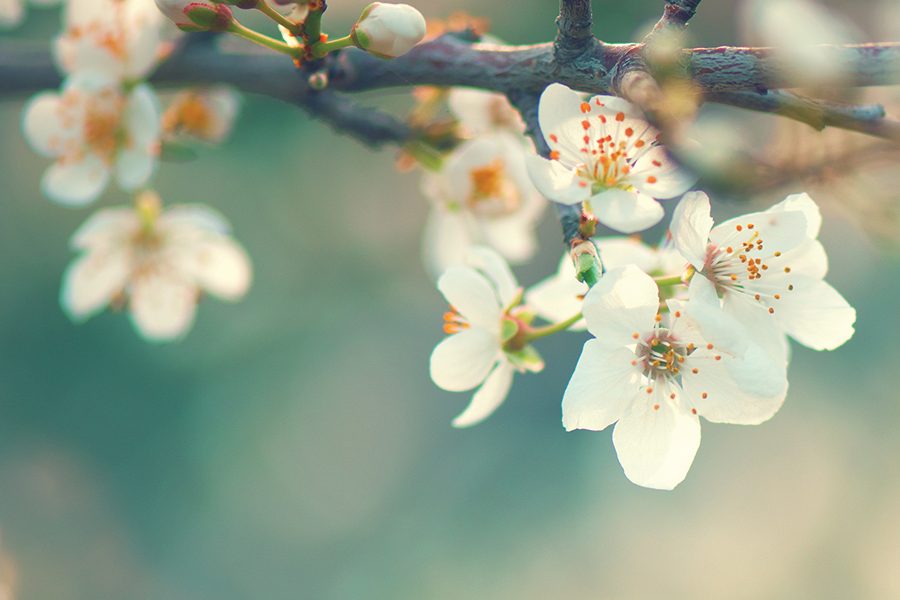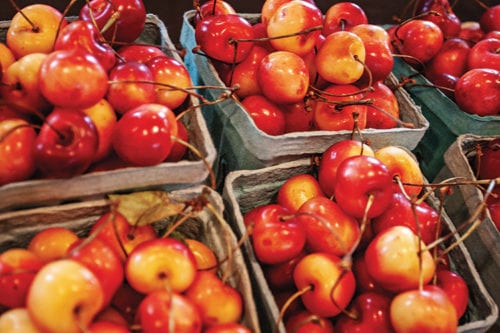
Home » Consumers crave their fresh fruit
Consumers crave their fresh fruit

June 14, 2021
The 2021 cherry crop is shaping up to be larger than last year’s but with the usual caveat for the sweet, fragile fruit: A single weekend of wind or rain could cause widespread devastation.
The cherry industry didn’t miss a beat when the Covid-19 pandemic arrived a year ago. Washington growers harvested nearly 20 million boxes, even as new safety protocols rolled across the Pacific Northwest in the early days of the coronavirus outbreak. Cherries are an early crop, and the harvest coincided with the new rules.
The 2021 crop is likely to be around 23.8 million, 20-pound boxes.
Most cherry growers profited in 2020 despite increased costs associated with managing around coronavirus, said Jon DeVaney, president of the Washington State Tree Fruit Association.
Final tallies for 2020 will be released in the fall, but the 2019 crop yielded sales valued at $393 million for the state.
But 2020 sales were strong, DeVaney said.
Consumers shopped heavily at grocery stores for in-home dining, taking advantage of fresh fruit with big health benefits.
“People who might have normally been inclined to have food cooked for them found that easy-to-consume fruit did very well,” he said. “People became more health conscious and thought, ‘Maybe I should eat fresh fruit to support my health.’ ”
Labor challenges
Cherry pickers tend to be quite mobile, often arriving in Washington from California in June looking for the farm paying the highest wages and with the most fruit available.
“They show up at the farm gate on a Monday morning and may only stay a few hours until they hear the farm down the road is paying more or has more to pick,” DeVaney said.
Many cherry workers live in the community temporarily, staying with friends or relatives, while others rely on employer-provided housing.
Cliff MacHugh operates two seasonal labor camps at Jackass Mountain Ranch, north of Pasco. He’s had to follow strict guidelines for safety.
“Trying to keep the government happy and the people happy at the same time is a nightmare,” MacHugh said.
Advancement in phases of the governor’s Healthy Washington Roadmap to Recovery didn’t come with a relaxation of the safety rules.
Social distancing and barriers remained at packing houses, along with mask requirements, including in the orchards. Growers have worked through logistical challenges related to housing, placing people in cohorts or limiting residents.
“Every business has their issues they had to work through, and we’re no different,” MacHugh said.
A push to vaccinate workers against Covid-19 ahead of the cherry-picking season starts before participants in the government’s guest worker program, H-2A, arrive in the country.

Industry leaders tout a nearly 100% vaccination rate, yet some worry about those workers already living domestically and potentially bringing the virus to Washington’s orchards after arriving from another state.
“The guys coming here from California are considered U.S. workers. They have no obligation to be tested and vaccinated, and they’re often living in unlicensed facilities,” said Dan Fazio, president of Wafla, formerly known as Washington Farm Labor Association. “Growers are required to hire these guys. So you’re in a tough position if you want them vaccinated. Employers are doing everything they can to cajole the workers, short of mandating it.”
Some have offered cash bonuses or additional time off for workers who voluntarily receive a Covid-19 vaccine. Still, Fazio is worried about a potential spread as 5,000 cherry workers are expected to arrive in Washington from California for the harvest.
Citing the daily mobility of workers who move between farms, DeVaney said it’s not possible to easily track which workers are fully vaccinated.
Harvest costs
Cherry workers are generally paid based on how fast they pick.
This often results in earnings well above the minimum wage.
“To get enough people in this region, our normal rate has exceeded $30 an hour,” MacHugh said. “Most people don’t realize it’s that expensive, but it is. It’s still hard to get people to pick at that rate. We’re buying their housing, too.”
He expects his 2021 harvest costs to be “very, very high,” while harvesting a smaller crop compared to the previous year.
“A light crop always costs more. It’s a lot of movement for a little bit of production,” he said.
The cost for workers is just a fraction of the expenses, as growers have to pay for personal protective equipment for staff, as well as additional staff to monitor workers and keep them adequately distanced, especially as many rush to the scale at once.
Growers make their money by how much their fruit sells for after all the packing costs, DeVaney said.
“Any safety changes were passed onto the growers and come out of their bottom line as well,” he said.
DeVaney predicts that as the second full cherry season commences under Covid-19 safety regulations, growers and workers will have had another year to get used to the changes and increase efficiency.
MacHugh said it remains a challenge to make a living in a labor-reliant industry.
Health benefits
Washington cherry farmers have a reputation for producing high quality fruit, yet still work to increase awareness of new varieties and health benefits as a way to keep consumers interested.
DeVaney said the perception of implied safety with bagged fruit helped keep sales high in 2020, as consumers expected less handling of the product before purchase, and pre-packaged amounts made for ease of sale with curbside pickup routines.
Driving consumer awareness of the health benefits of cherries remains a top priority. James Michael, vice president of marketing for the Northwest Cherry Growers, said the organization’s board signed off on its largest promotional program ever to push this message.
The group’s survey of cherry buyers found more than half were influenced by the immune-boosting or anti-inflammatory properties of cherries.
International markets
The pressure on international markets eased a little in 2020 with a smaller crop, and much of Washington state’s cherry harvest stayed in North America, said Keith Hu, director of international operations for the Northwest Cherry Growers.
“Southeast Asia didn’t need to absorb a lot of fruit,” he said.
Cherries have a short window for freshness and usually ship by air in the cargo holds of passenger planes to reach consumers in time.
Yet passenger flights were limited and the industry expects to rely more on ocean liners for distribution.
“Time is of the essence for us,” Hu said. “It will be interesting to see how the industry plays out with sea shipments. Packers will do their best to secure as much air freight as possible.”
On arrival overseas, cherries may be subject to a 20% duty, plus a 10% value-added tax in some markets. But Hu is optimistic, since most markets and economies are running “almost normal” in Asia with full capacity in public places, and in-store promotions can go forward as planned.
California works as an early predictor on cherry demand. Based on that, Hu expects about 70% of Washington’s sweet cherry crop will stay stateside this year.
A complex of viruses known as little cherry disease has become an increasing concern to sweet cherry farmers.
Infected trees produce little cherries, which cannot be sold to consumers.
Likely spread through root contact or insects, there is no cure. A diseased tree cannot be salvaged by limb removal. It has to be removed entirely.
Washington State University’s tree fruit experts say little cherry disease has been found in commercial sweet cherry orchards in a number of Washington counties, including Benton, Franklin and Yakima.
Each spring, cherry growers know there’s “a lot of weather still ahead of us” but remain overall optimistic about the development of the fruit on the trees.
MacHugh expects to pick about five to six days later than last year’s start of the harvest. It will take about three weeks to pick the hundreds of acres on a farm his family first planted in the 1980s. He grows Bing, Chelan, Santina, Rainier and Sweetheart varieties.
Chilly temperatures over Easter weekend in early April 2021 seem to have left frost damage.
“Some blocks I wonder if we’ll pick, and other blocks are fine,” he said.
MacHugh’s canvassing team expected picking to begin at the beginning of June, with shipping volumes expected to outpace the previous year.
Focus Magazine Agriculture + Viticulture
KEYWORDS june 2021





